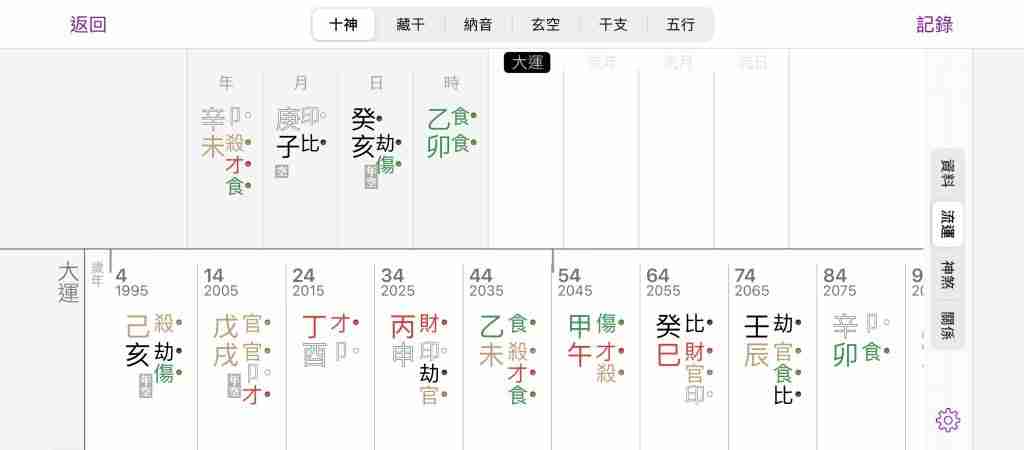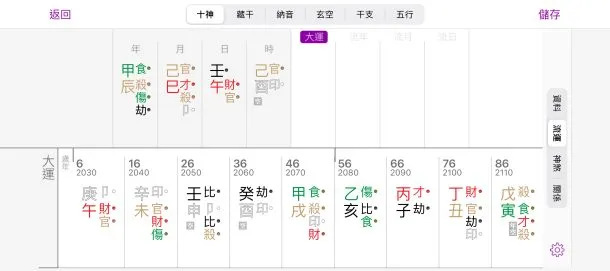Death Emptiness, also known as 空亡 (kōng wáng), is perhaps one of the most enigmatic and perplexing topics in Chinese astrology. It’s one of those concepts in BaZi that has very little reliable source material for study. People often don’t know exactly what impact Death Emptiness has on a chart, and most modern-day practitioners fall back on their imagination.
This post aims to briefly introduce Death Emptiness and explain some of the impacts and manifestations we can observe in real life.
What Is Death Emptiness?
First, please don’t see Death Emptiness as a ‘thing’ or ‘god’ that shows up under special circumstances and brings calamity to someone’s chart. It is also not a ‘feeling’ or whatever it is. There is no need to add your spices and flavour to the definition of Death Emptiness. One annoying thing about modern-day Chinese astrology is that people sometimes take the meaning of the terms too literally or on a surface level, leading to a complete misrepresentation and misinterpretation of BaZi concepts.
I hesitate to use the terms “Death Emptiness” or “DE”, but I have no choice because we live in a world where we coin English terms flippantly, thinking they directly reflect what the Chinese terms mean. We don’t think hard enough about the term 「空亡」。 空 means empty, which we call know. Yes, 亡 can mean death, but it can also mean to “lose” or “escape”. If you put these two words together, it can actually mean “escaping emptiness” or “removing emptiness”.
“Death Emptiness” is a literal translation of 「空亡」no doubt, but the word “Death” ends up misleading people about what this enigmatic term is really about. You should never interpret Chinese words and terms literally – interpret them idiomatically.
The Basics Of Death Emptiness
Let’s go back to the basics. The concept of Death Emptiness, or 空亡, is derived from the 10 Heavenly Stems and 12 Earthly Branches that form the sexagenary cycle, comprised of 60 Pillars consisting of a Stem sitting on top of a Branch.
The sexagenary cycle comprises five mini-cycles we call a 旬 (xún), and each mini-cycle consists of twelve years represented by 12 Earthly Branches. However, there are only 10 Heavenly Stems to go around. Each mini-cycle will be left with two Branches that do not have a Stem to ‘sit’ on top of it.
Take a look at the table below:

The first mini-cycle, also called 甲子旬, starts with 甲 sitting on top of 子 and ends with 癸 sitting on top of 酉。戌 and 亥 are left. As such, they form the next mini-cycle beginning with 甲 sitting on 戌, and the process continues until one full 60-year cycle is complete and we are back to 甲子 again.
To put it more simply, each of the five mini-cycles above will have 10 Pillars with two Branches left out. There will be considered a group. The two Branches that have no Stem sitting on them, in other words, are ‘left out’, would be your Death Emptiness positions of that particular group. Just see it like musical chairs.
That is all there is to it. Death Emptiness is looking at which are the ‘leftover’ Branches in one of the mini-cycles. It is not a ‘feeling’, as some practitioners put it. Neither is it some blackhole that sucks away an element and makes it disappear.
Perhaps the best way to put it is that these are positions whereby the Stems and Branches cannot connect, and if they can’t, naturally, it’s harder for a manifestation to occur. The keyword here is “harder”, not impossible.
Each Pillar Has Its Own Death Emptiness Position
Most BaZi calculators will only show you the Death Emptiness position of the Day Pillar and sometimes the Year Pillar. Take this chart, for example:

You will see “空” on the Month Pillar of 庚子, signifying that 庚子 is the Death Emptiness position of 癸亥。 Next, you will see 年空 on the Day Pillar, meaning the Day Pillar and its 亥 Branch is the Death Emptiness position of 辛未。 Refer to the Death Emptiness table in the above section, and you will understand what I mean.
The Death Emptiness positions for the Month Pillar and Hour Pillar are often left out, which is a pity because it adds a lot of depth to a BaZi chart analysis and how you can analyze it.
What Does Death Emptiness Do?
The common misconception thrown around by ‘practitioners’ trained by other ‘practitioners’ is that Death Emptiness’s appearance completely negates an element’s existence. It’s complete nonsense, and the misunderstanding is probably due to people taking the term Death Emptiness too literally.
Suppose your Day Pillar happens to be 丁酉, and your Death Emptiness positions are 辰 and 巳。 If you’re a 丁酉 Day Pillar chart-holder and you’re born during summer in the month of 巳, does the heat of summer go away? Does it magically become winter? It doesn’t.
Death Emptiness does not magically make an element disappear. It simply means an interaction is unable to take place.
Let’s use the 丁酉 Pillar again as an example: Chen (辰) and si (巳) are the Death Emptiness positions. Suppose the Pillar 壬辰 or 癸巳 appears somewhere in the chart – it means the 丁酉 Pillar is simply unable to interact with these two Pillars.
The difficulty in interpreting Death Emptiness lies in interpreting what “unable to interact” means and manifests as. What makes it even more complicated, sometimes, is that the Year and Day Pillar can be each other’s Death Emptiness position, making the interpretation of the chart even more complex.
Death Emptiness In Qi Men Dun Jia
Death Emptiness is also a concept used in Qi Men Dun Jia, and you would always see me taking the position of Death Emptiness into account when doing a Qi Men Dun Jia divination. It’s a trait in the chart that must never be ignored, and it is considered one of the 奇门四害s during forecasting, meaning the four ‘negative’ factors to take into account when deciphering a chart.
The formula for calculating where Death Emptiness ends up in a Qi Men Dun Jia chart is no different from BaZi. It’s often the interpretation of it that throws people off.
Real Death Emptiness & Fake Death Emptiness
You might think the concept of Death Emptiness is straightforward and that there’s only one version. That’s not true. Death Emptiness has different versions, in the sense that its effects can change depending on the state of the chart.
I don’t wish to go into the technicals of the “real” and “fake” versions of Death Emptiness for now, other than to say that different versions of Death Emptiness exist.
Death Emptiness Can Be Removed
Yes, you read that right. Death Emptiness is not a permanent feature in one’s chart. It can be removed, albeit temporarily, before things revert eventually, although it’ll take some time.
The removal of Death Emptiness can be a trait built into your natal chart, or it can come from your Elemental Phases. The manifestations will, of course, be different. Sometimes, having Death Emptiness appear in one’s chart and having it removed is more auspicious than having no Death Emptiness in one’s natal chart, although that’s highly dependent on what the chart needs and how it’s structured.
Positive Or Negative Death Emptiness?
This is perhaps the one thing all websites talk about superficially. The simple rule of thumb is that if Death Emptiness appears with a negative element, then Death Emptiness’s effects are deemed positive because you’re taking a negative element out of the equation. Please remember it does not mean the negative element is completely gone. Death Emptiness might prevent the interaction with a Pillar holding these elements, but it doesn’t mean things won’t change because Death Emptiness can be removed.
The flip side is also true – if Death Emptiness is tagged with a positive element, it’ll be harder to reap the benefits of what that positive element means as well, although things will change when Death emptiness is removed.
My point is this: The whole concept of Death Emptiness is not as straightforward as it sounds. Hobbyists and ‘practitioners’ have butchered what Death Emptiness means and also failed to consider the different versions and special interactions involving Death Emptiness.
The different faces of Death Emptiness can lead to more surprising outcomes than you can imagine, but I’ll leave that for another case study.









